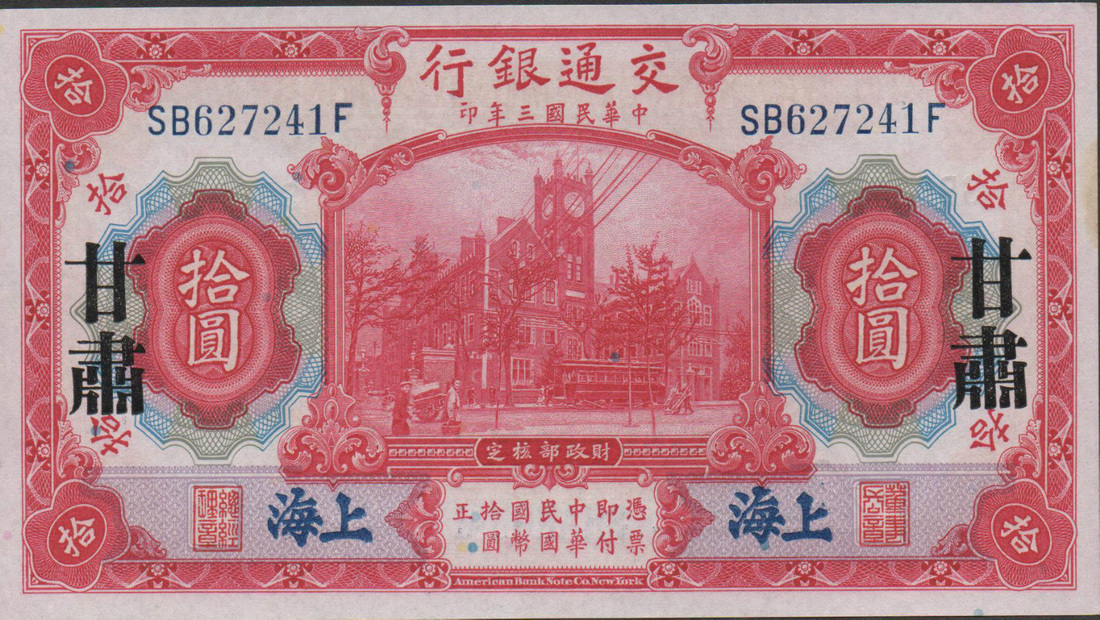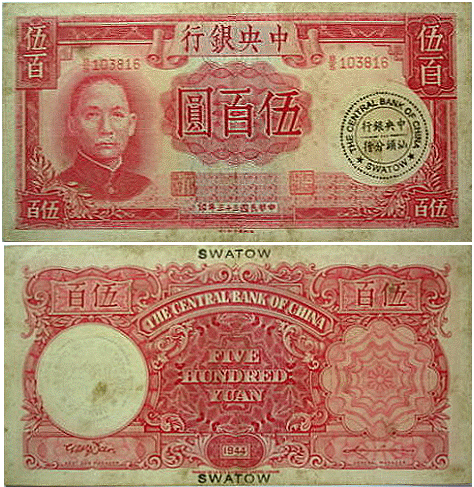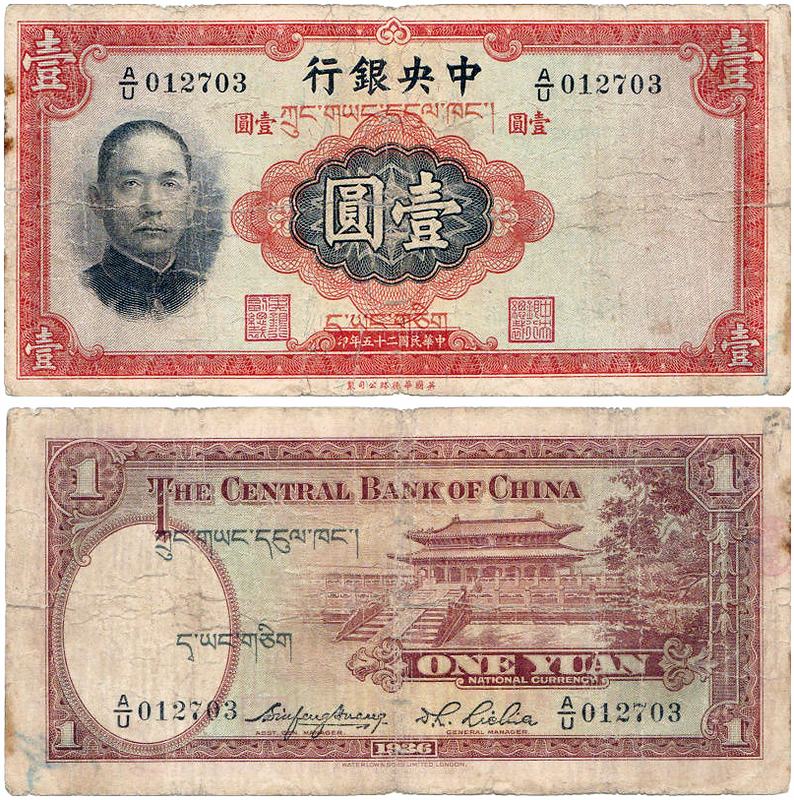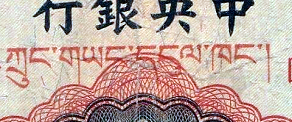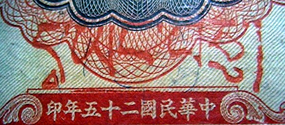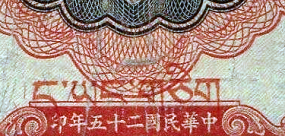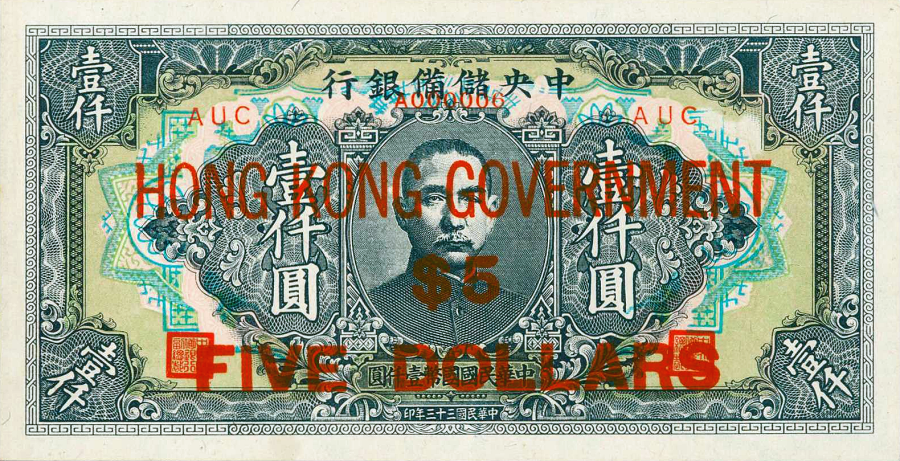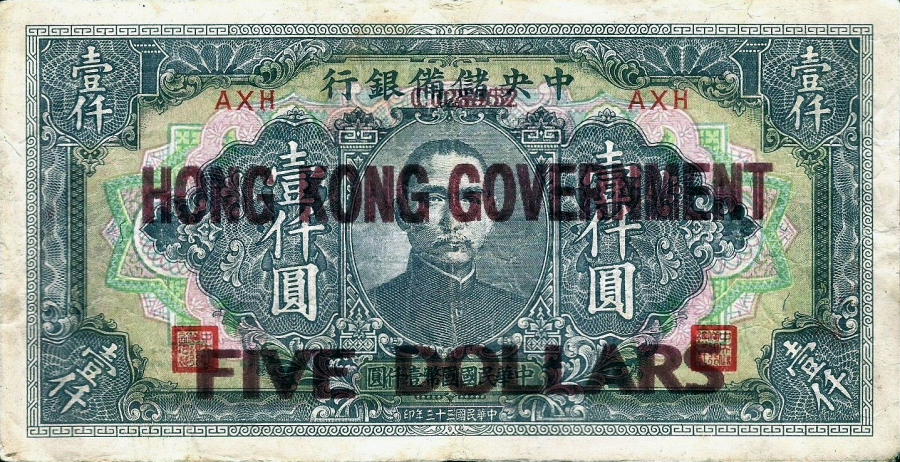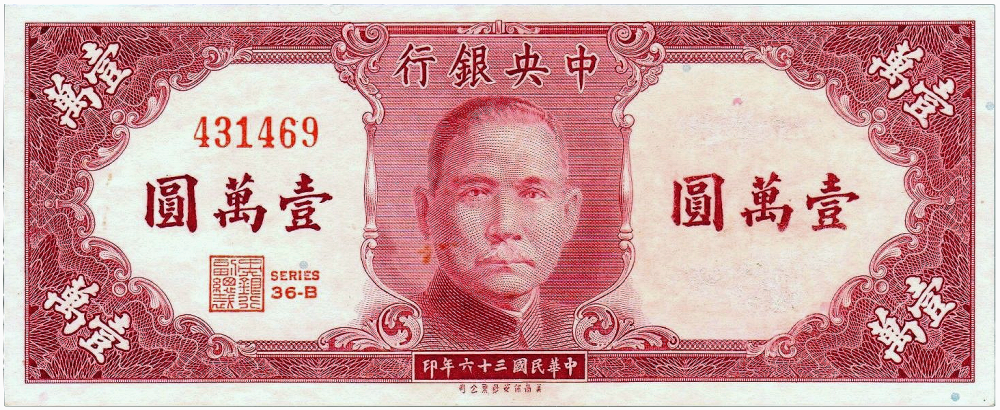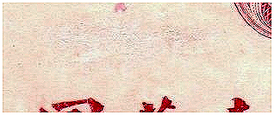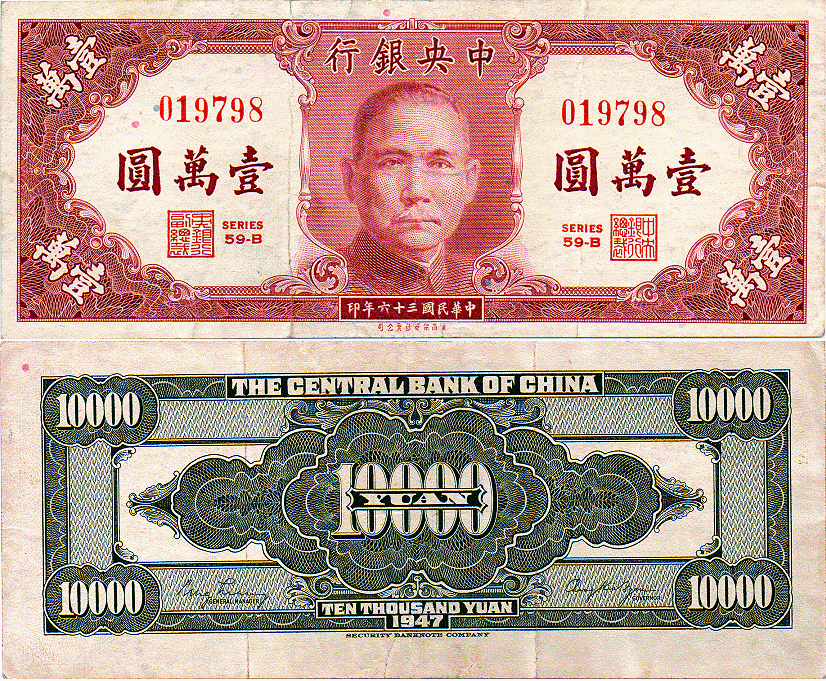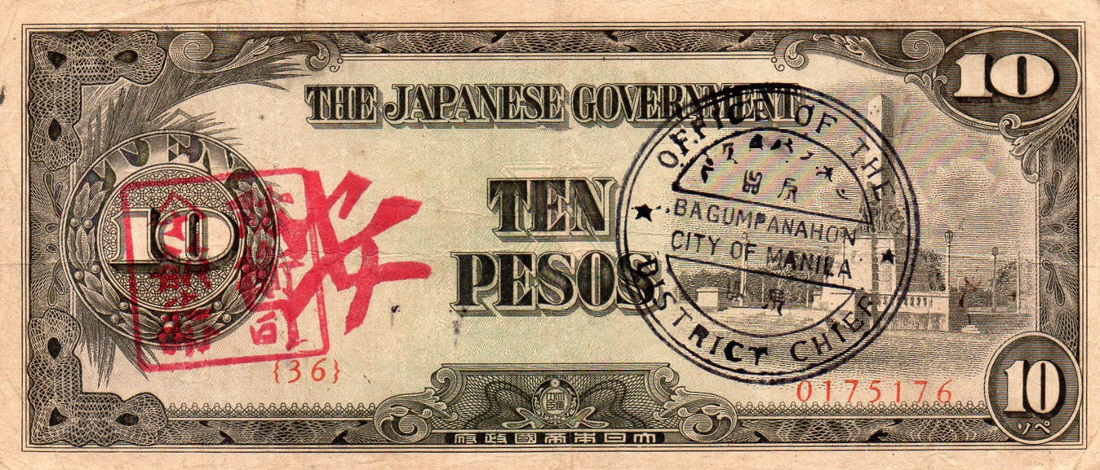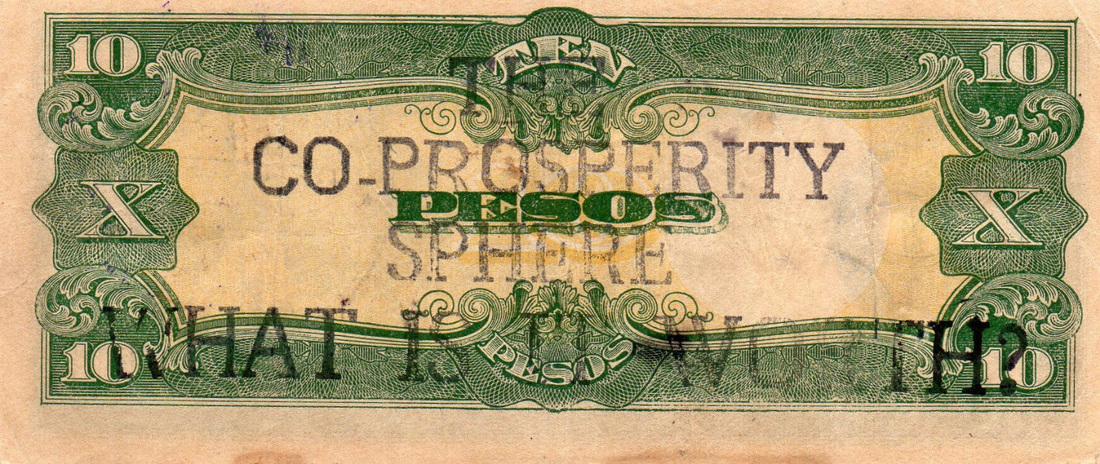Tampered Money |
Updated December 02 2016
Return to the 'Fakes and Forgeries' Index |
One often overlooked aspect of currency deception - past and present - is of paper currency which has been altered to enhance value, either at the time of circulation, or for collectors. Alterations can include a change of denomination, or branch and even bank of issue. Some alterations are intended to create scarce varieties of more common notes. Some notes are even vandalised to produce false errors or varieties.
What follows are some of many examples of old and new notes which have been tampered with. It should be added that some alterations during the time of issue were perfectly legitimate - or at least not intended to deceive whether or not such alterations were approved by the issuing bank. Indeed, it is some of these contemporary overprints which have been forged in recent years. Of course unusual overprints should never be 'written off' as spurious without some research. And as a last point, care should be taken not to confuse official or semi-official overprints with chop marks applied to notes by merchants at the period of issue, which are a fascinating area of study in themselves and can sometimes reveal lost clues about the history of a banknote - but that topic is for a future article.
Lastly be aware that some alterations to notes were the result of attempted fraud during the period of issue, which do of course have historical and collecting value - however these are rare and usually easy to tell apart from modern tampering. Some details of these are found in the 'Old Counterfeits' section.
This article as with others in this Fakes-Forgery-&-Fantasy section will be updated periodically as new examples appear.
What follows are some of many examples of old and new notes which have been tampered with. It should be added that some alterations during the time of issue were perfectly legitimate - or at least not intended to deceive whether or not such alterations were approved by the issuing bank. Indeed, it is some of these contemporary overprints which have been forged in recent years. Of course unusual overprints should never be 'written off' as spurious without some research. And as a last point, care should be taken not to confuse official or semi-official overprints with chop marks applied to notes by merchants at the period of issue, which are a fascinating area of study in themselves and can sometimes reveal lost clues about the history of a banknote - but that topic is for a future article.
Lastly be aware that some alterations to notes were the result of attempted fraud during the period of issue, which do of course have historical and collecting value - however these are rare and usually easy to tell apart from modern tampering. Some details of these are found in the 'Old Counterfeits' section.
This article as with others in this Fakes-Forgery-&-Fantasy section will be updated periodically as new examples appear.
Modern Alterations to Deceive Collectors: Government Bank issues
|
Above: Bank of Communications 10 Yuan of 1914 (c.1935-40) with "Kansu Province" overprint. A prime example of a common note being altered to create a rare variety: some of the notes have sold for $100s in the past. It's quite a well thought through deception which convinced many until the culprit was revealed a few years back.
|
Above: Central Bank of China 1 Yuan of 1936, with "Swatow" overprints. This is a modern forged overprint: unlike the "Kansu Province" example, there have been banknotes carrying these Swatow overprints. The genuine examples are only found on 1 Yuan Central Bank of China issues dated 1923. This is a clumsy fraud, as not only is the Chinese placename missing from the front but more importantly the original was an issue of this banks predecessor; created out of the re-organised Kwangtung Provincial Bank in 1923-24 and which was re-organised again with a name-change to the Kwangtung Central Bank in 1929, so as to avoid confusion with this Central bank founded at Nanking (Nanjing) in 1928.
|
|
(left) The Central Bank of China 500 Yuan of 1944, with "Swatow" overprint. The same forgery overprint again as the 1936 1 Yuan above. This time even less credible as during this period Swatow was still occupied by the Japanese, and these Central Bank notes were prohibited from circulation; in fact not even available anywhere near that region of China at the time. |
|
The Central Bank of China (Waterlow & Sons) series of 1936 with Tibetan overprints. (right) a genuine 1 Yuan note with modern faked overprints. The Tibetan text is too small - the lower band of text in particular - and far too neat. Additionally, this second lower band of text does not match the 'lettering' of the original. These are most likely the product of a computer-printer. Below are close ups of from a genuine example, with close ups from this spurious example underneath for comparison. |
Hong Kong Government Provisional issue $5 of 1945 overprinted on the Central Reserve Bank of China 1000 Yuan of 1944 (SCWPM 319)
Alterations to create false 'rare' varieties and 'error' notes
Several examples have appeared recently of commonplace notes being altered in some way - usually by the attempted removal of features - to create a supposed rare variety, a fake error or remainder type note. As these can be a particular area of interest among collectors (and researchers) this was inevitable. On some occasions in the case of fake 'errors' the deception is probably more an attempt to salvage a mistake than a pre-planned attempt; as I've mentioned elsewhere in the 'Cleaning Paper Money' section, some dealers attempt to pass off a bad cleaning job as an 'error'.
Above: The Central Bank of China 10,000 Yuan of 1947. The left note appeared on ebay within the last week (the right note is an example of an unaltered note as it should appear). In order to create a false error or variety note, the serial number and seal have been scraped away from the right side. This is only discernible on the enlargements which it always pay to study (and not all sellers provide them). The enlarged detail section shows the paper roughness and faint traces from the scraped off serial number.
Below: The Central Bank of China 1 Yuan of 1936. This is an odd pair; someone has taken these remainder notes, originally without seals or serial numbers, and added their own in the belief that this dodgy pairing with apparently "matching" serial numbers would sell for more. They haven't even bothered to stamp the back set of serial numbers which should be below the signatures.
Miscellaneous Asian paper money
|
Philippines: The Japanese Government 10 Pesos 1944.
A genuine circulated note with suspected fake modern overprints pretending to be period Japanese additions. |
Philippines: The Japanese Government 10 Pesos 1944.
A genuine circulated note with a modern forgery of a well-known period propaganda overprint used by US forces. |
